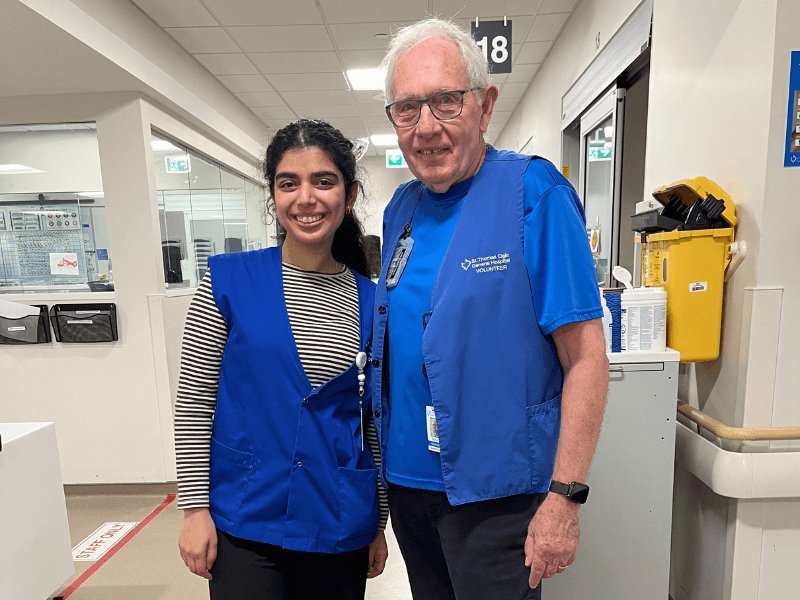Emergency Department
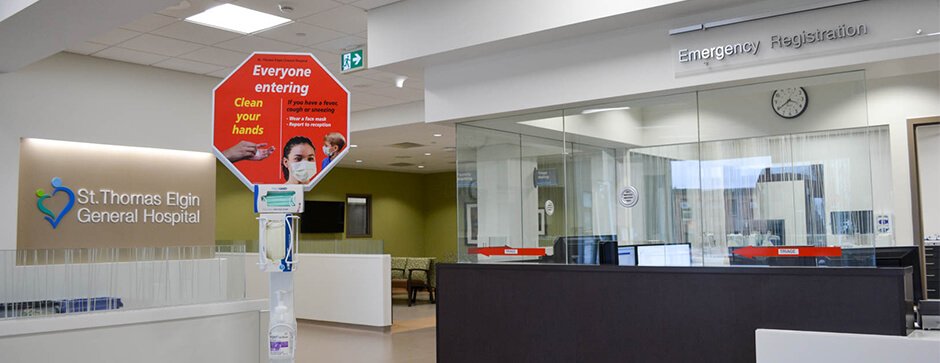
Welcome to the Emergency Department.
Welcome to the heart of our emergency services at St. Thomas Elgin General Hospital. Explore our state of the art Emergency Department (ED) through this photo tour, offering a glimpse into the compassionate care and advanced technology that define our commitment to emergency medicine.
From our dedicated team of ED physicians, nurses, support staff, and volunteers, to our cutting-edge facilities, discover how we prioritize patient-centred care in every emergency scenario.
We invite you to take a virtual journey through our department and see firsthand the environment that supports our community during times of urgent medical need.
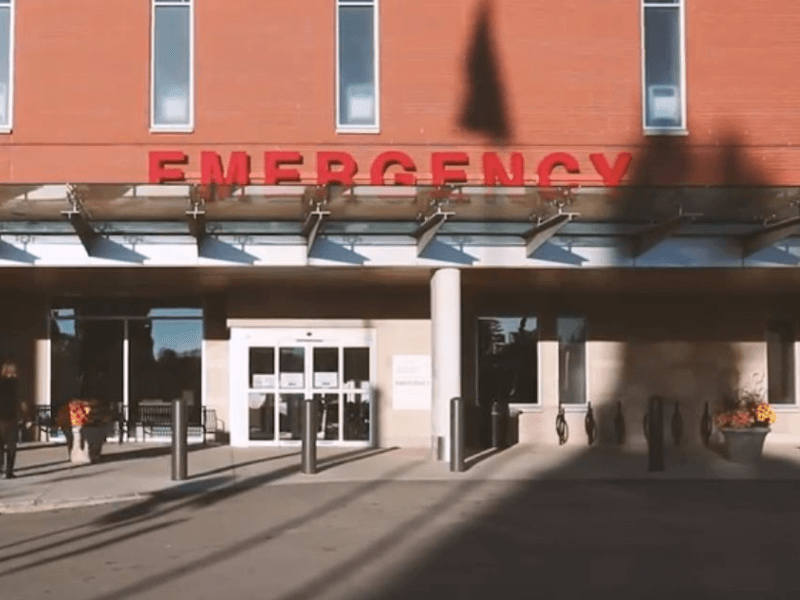
Welcome to the Emergency Department (ED). The ED is located in the North Building on the First Floor. Parking is available in the North or East lots, accessible from Elm Street. When should you visit the ED? When you need urgent or emergency care.
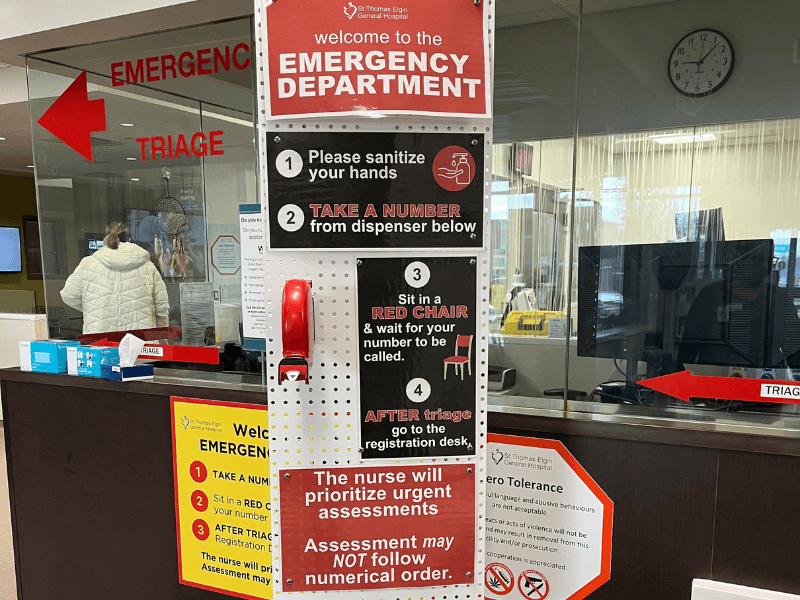
When you enter the ED, please take a number from the dispensing unit. This number places you in the queue to be triaged. The triage nurses are continuously scanning the waiting room and may call someone in ahead of you if they appear to be in severe distress.
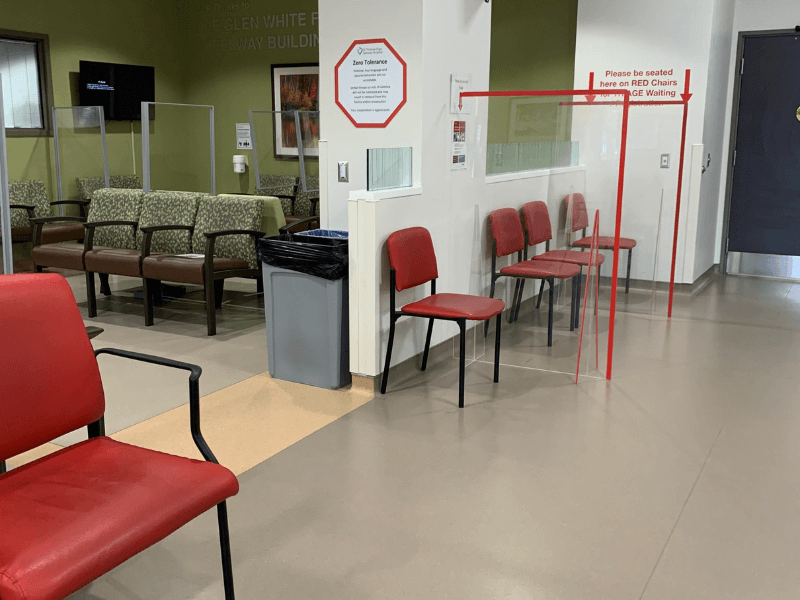
Once you have a number, please have a seat in the red chairs and wait to be triaged. If there are no red chairs available, you may sit anywhere in the waiting room. The triage nurse will call your number when it is your turn.
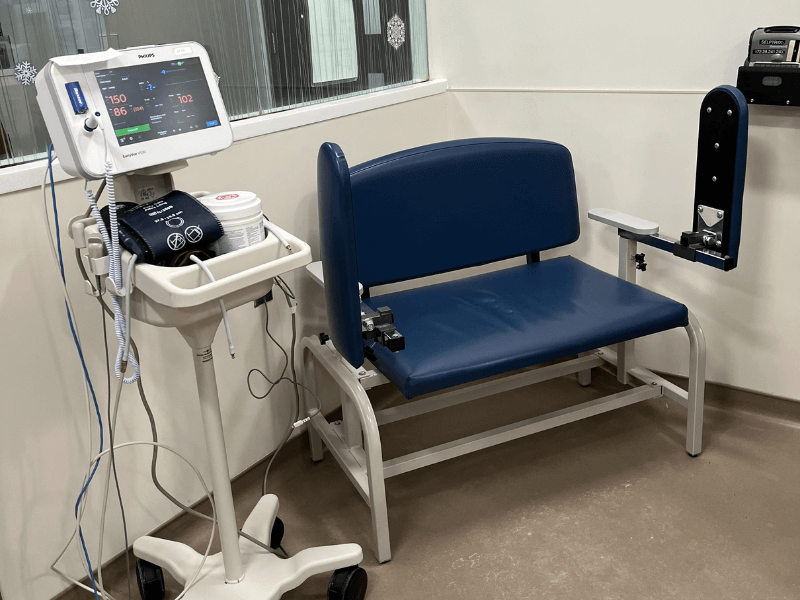
When your number is called, please enter the triage area. The nurse will direct you to a chair and will begin the triage process.

Triage is a system for prioritizing patients in need of care based on the urgency of their condition. In Canada, the Canadian Triage and Acuity Scale (CTAS) is used to categorize patients into five levels of urgency. A nurse will assesses your condition and determines the severity of your injury or illness. Triage is an important process because it ensures that critically ill or injured patients receive priority care. It also helps to ensure that the right patient receives the right treatment at the right time.
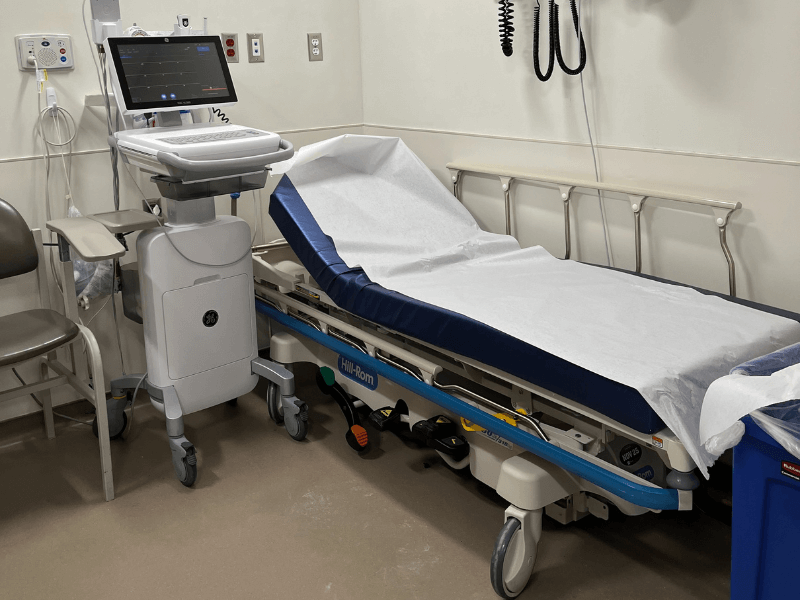
If you are feeling unwell and are unable to sit, there is a stretcher bed in the triage area as well.
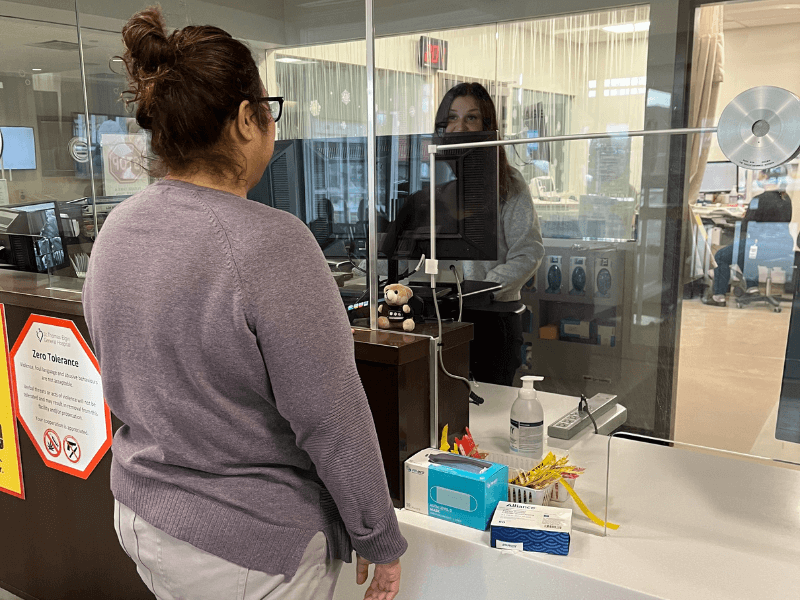
When triage is complete, the nurse will direct you to the Registration Desk. Here, a clerk will go over paperwork with you and will give you and ID bracelet for your arm. This bracelet not only helps to identify you, it also communicates important information, such as allergies.
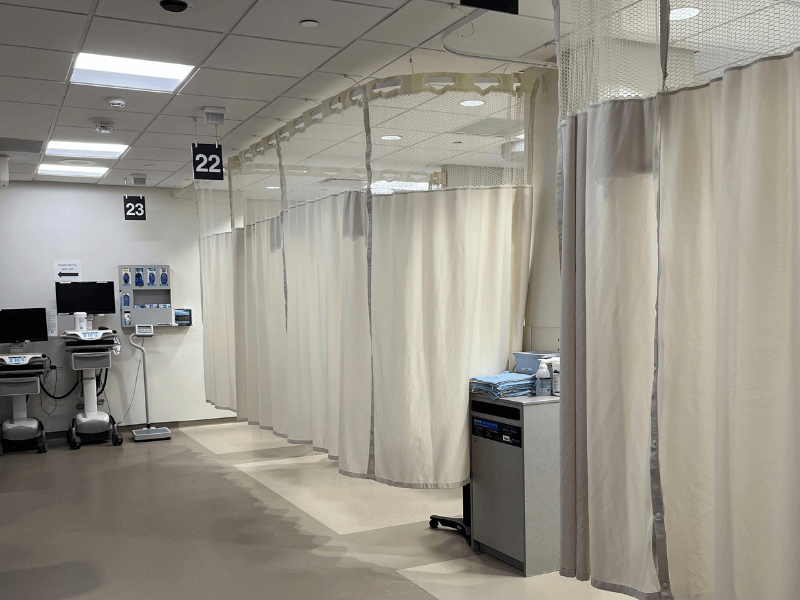
The ED is divided into two acuity areas – high acuity and low acuity. High acuity patients have more severe conditions that require immediate medical attention, such as trauma or cardiac arrest. Low acuity patients have a mild illness or injury that doesn't require immediate intervention. Examples include a broken finger, upper respiratory tract infection, etc. This is a photo of our Lower Acuity treatment area.
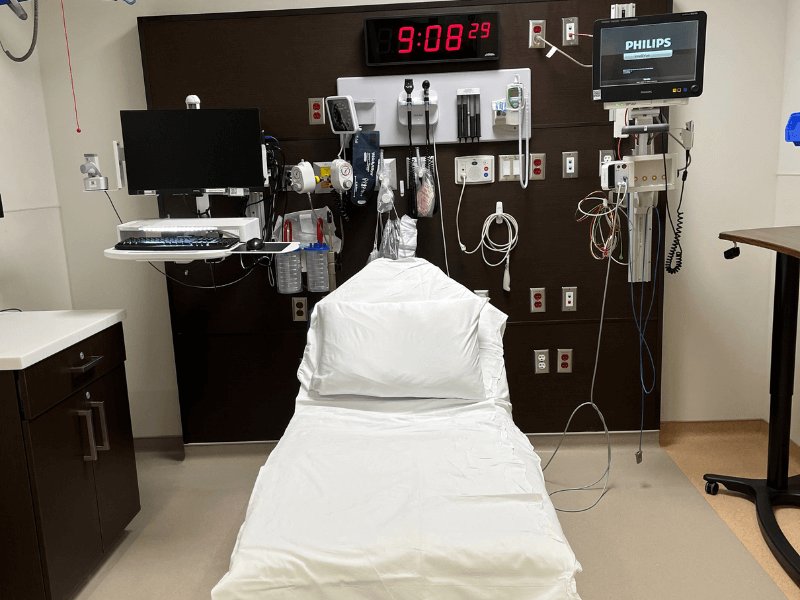
When it is your turn to see a health care provider, you will be called back into an exam room. The nurse will get you situated on the bed and will discuss your symptoms. Depending on your condition, your health care team may consist of nurses, residents and/or physicians.

To ensure your privacy, there is a switch on the wall that will turn the doors in your exam room from transparent to opaque. You will not be able to see out and no one will be able to see in.
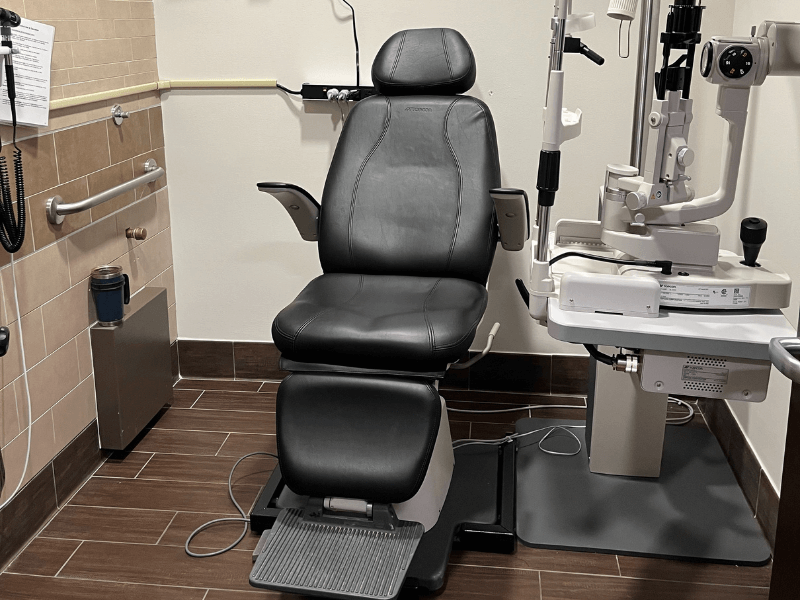
One of the newest areas in our ED, this is the Eye Room. This room is used to assess and treat eye injuries and other eye conditions.
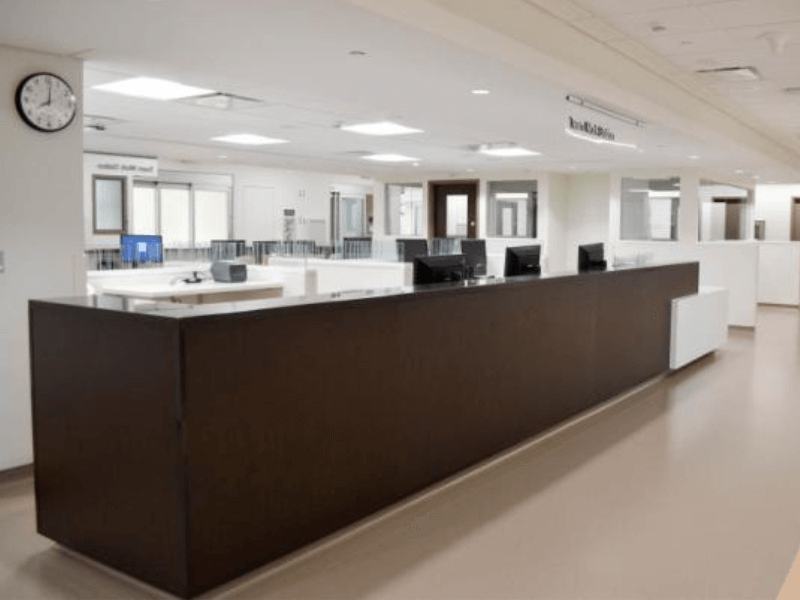
Our state-of-the-art Emergency Department is an open-concept design, meaning the nursing station is located in the centre with the exam rooms around the perimeter. This allows our health care team to have a line of sight on everyone at a glance. It also allows for collaboration between team members.
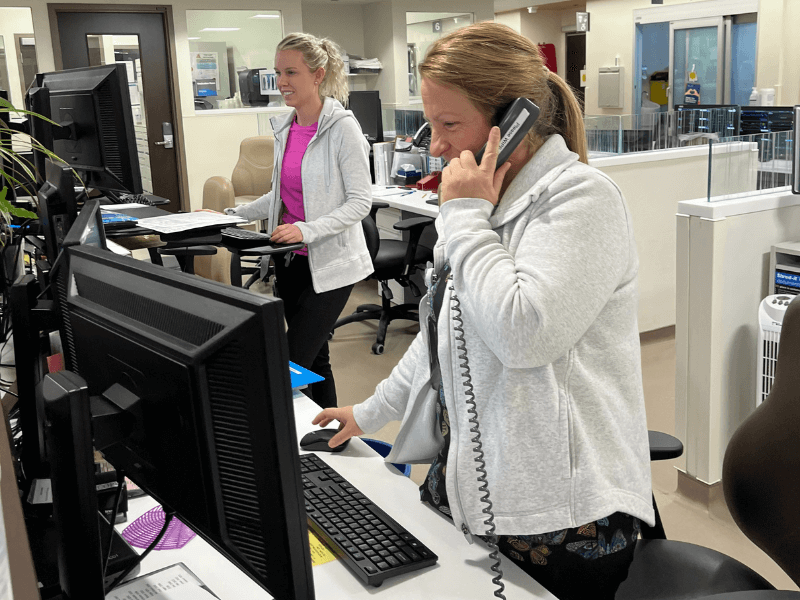
Our busy Emergency Department has a number of admitting/registration clerks. These individuals are the friendly faces that greet you each time you call or visit the department. This team manages admissions, discharges, and registers every patient that comes into the department and/or is admitted to hospital.
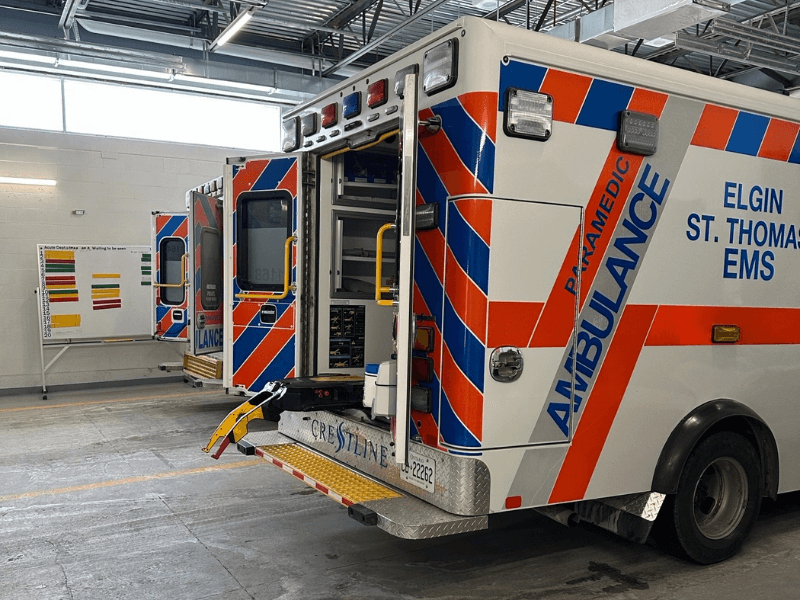
The Ambulance Bay is located at the back of the ED. This location allows paramedics easy access into the department. The ambulance pulls right into the garage, so they aren’t battling the elements when transferring patients. Just because a patient arrives by ambulance doesn’t mean they are prioritized. They are triaged on the way to the hospital, and if their condition isn’t urgent, they will be placed in the waiting room until it is their turn.
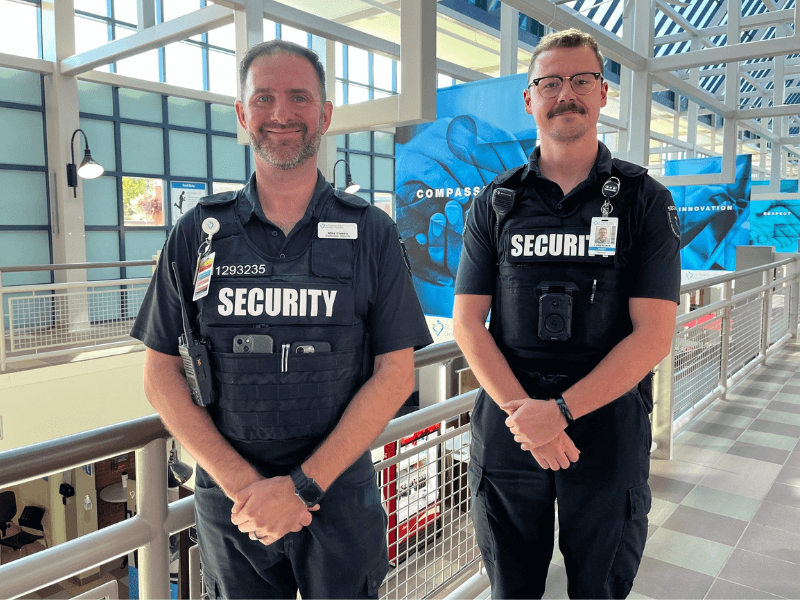
Our ED works very closely with our in-house Security Team to ensure patients are safe while in hospital. If a situation escalates, Security may be called to assist.
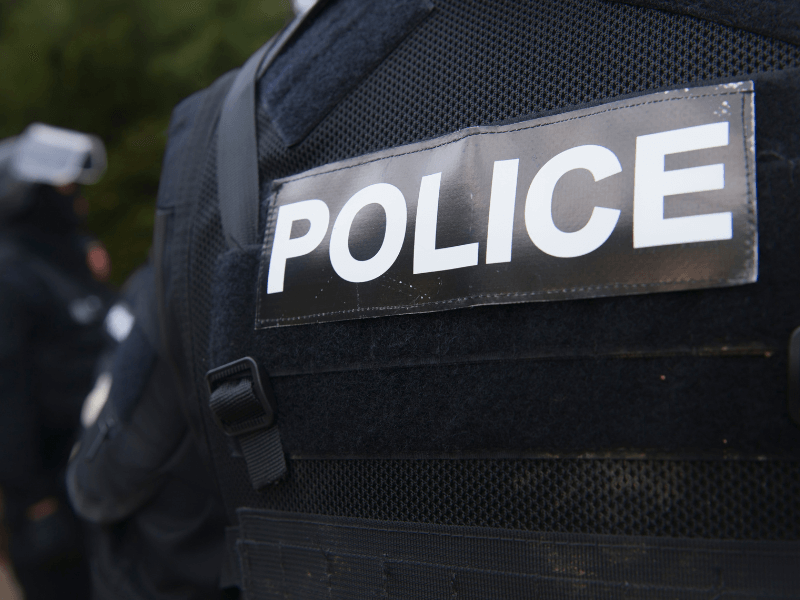
We also work closely with St. Thomas Police Services to improve the response to mental health crises and reduce the burden on our ED. It is not uncommon to see a police officer stationed in the ED. We value this partnership and often have the police onsite to provide training and support to our staff.
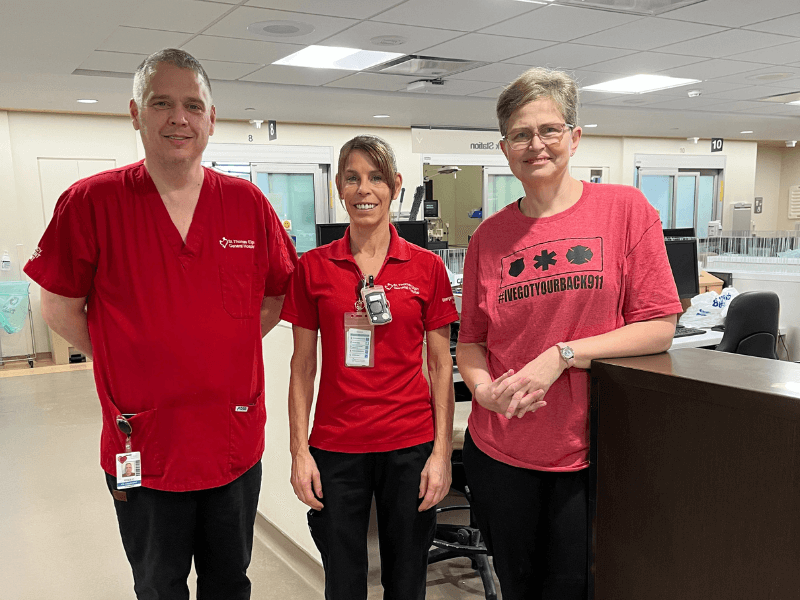
While in the department, you may see smiling faces wearing red shirts. These are our Emergency Department Assistants, or EDAs. These individuals provide patient transfers throughout the hospital, assist the nursing team, stock supplies, perform housekeeping duties, and make sure patients and staff have everything they need to provide an exceptional patient experience.They have specific training for the ED that makes them a vital part of the team.




